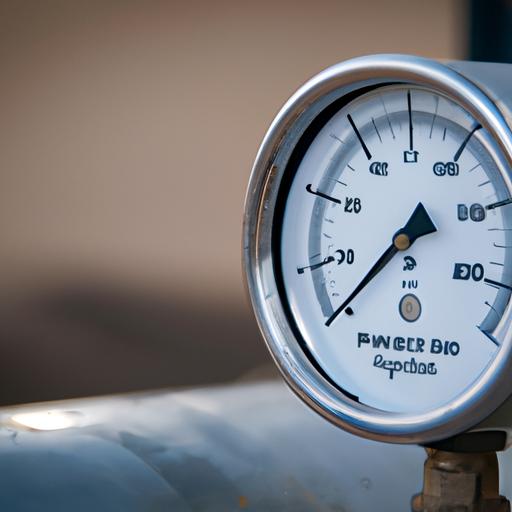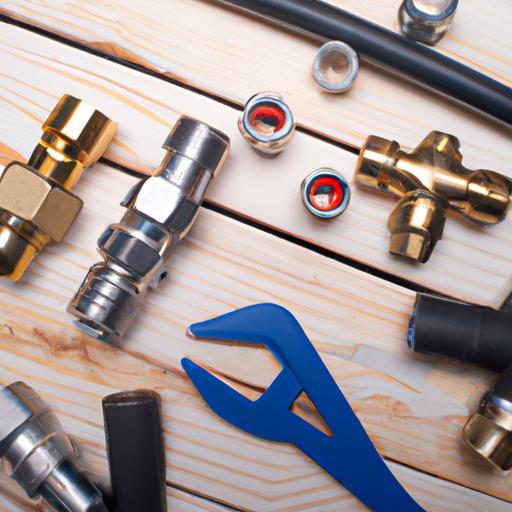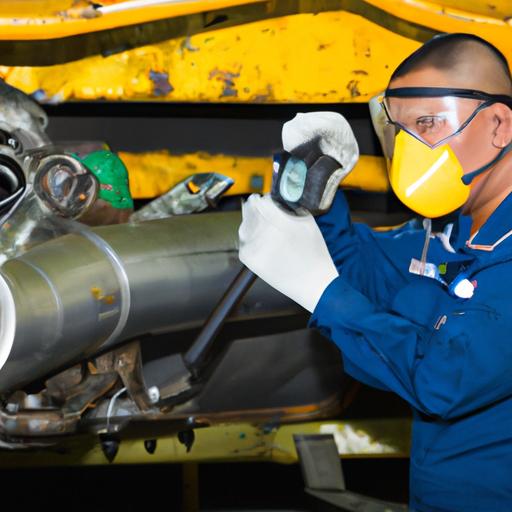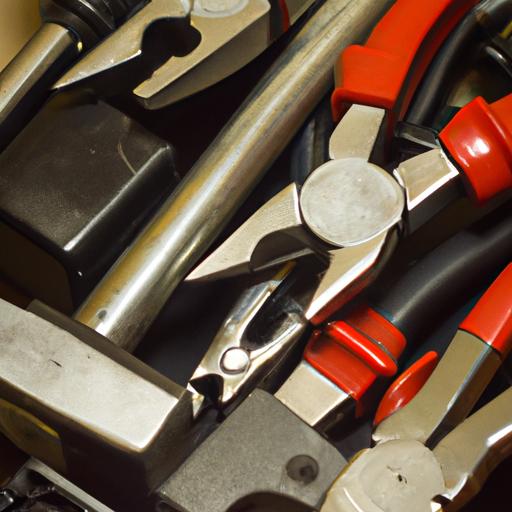Introduction
In today’s fast-paced and technologically advanced world, precision and accuracy are paramount in ensuring the smooth operation of various industries. When it comes to measuring pressure, accuracy becomes even more crucial as it directly impacts safety, efficiency, and overall performance. That’s where pressure measuring tools come into play, acting as the reliable allies to ensure accurate pressure measurement.
Pressure measuring tools play a vital role in a wide range of industries, including manufacturing, automotive, aerospace, and oil and gas. These tools enable engineers, technicians, and professionals to gauge the pressure exerted within systems, pipelines, vessels, and components. By accurately measuring pressure, potential risks can be mitigated, system failures can be prevented, and optimal performance can be achieved.
Whether you’re dealing with liquids, gases, or even complex systems, pressure measuring tools provide valuable insights that guide decision-making processes. These tools can help identify fluctuations, pressure leaks, or deviations from desired levels, enabling timely adjustments and maintenance. With accurate pressure measurement, industries can ensure the safety of their operations, maintain quality control, and enhance overall productivity.
In the next sections, we will delve into the different types of pressure measuring tools available, factors to consider when choosing the right tool, and best practices for their usage and calibration. By understanding the essentials of pressure measurement and the tools involved, you will be equipped with the knowledge to make informed decisions and optimize performance in your industry. So, let’s explore the world of pressure measuring tools and unlock the potential of accurate pressure measurement for your operations.
Understanding Pressure Measurement
Definition and Explanation of Pressure
Pressure can be defined as the force exerted on a unit area. It is a fundamental concept in physics and engineering, representing the intensity with which a substance or system exerts force on its surroundings. In practical terms, pressure is measured in units such as pounds per square inch (psi) or pascals (Pa).
To put it simply, imagine a balloon being inflated. As air is pumped into the balloon, the pressure inside increases. This pressure is what gives the balloon its shape and causes it to expand. Similarly, in industrial settings, pressure is a critical parameter that needs to be accurately measured to ensure the proper functioning of various systems and processes.
The Role of Pressure Measurement in Different Applications
Pressure measurement plays a vital role in a wide range of applications across various industries. Whether it’s monitoring the pressure in a hydraulic system, controlling the pressure in a chemical reactor, or ensuring the proper functioning of a gas pipeline, accurate pressure measurement is essential for maintaining optimal performance and safety.
In the automotive industry, for instance, pressure sensors are used to monitor tire pressure, engine oil pressure, and fuel system pressure. These measurements help prevent tire blowouts, engine damage, and fuel leaks, ensuring both driver safety and vehicle efficiency.
In the pharmaceutical industry, pressure measurement is critical during the manufacturing process of medications. Precise pressure control ensures the correct dosage and quality of drugs, safeguarding patient health and complying with regulatory standards.
Importance of Reliable Pressure Measurement for Safety and Efficiency
Reliable pressure measurement is vital for maintaining safety and efficiency in various industrial processes. Accurate pressure readings enable operators to detect abnormalities, identify potential leaks or failures, and take appropriate corrective actions promptly. This proactive approach helps prevent accidents, equipment damage, and costly downtime.
Moreover, precise pressure measurement enables optimal process control. By accurately monitoring pressure levels, operators can fine-tune system parameters, adjust flow rates, and optimize energy consumption. This not only improves efficiency but also reduces operational costs and environmental impact.
In summary, understanding pressure measurement is crucial for ensuring the safe and efficient operation of industrial processes. Accurate pressure measurement provides valuable insights that help prevent accidents, optimize performance, and meet regulatory requirements. In the next sections, we will explore different types of pressure measuring tools and delve deeper into their functionalities.
Types of Pressure Measuring Tools
When it comes to pressure measurement, there is a wide array of tools available, each designed to suit specific applications and requirements. Let’s take a closer look at the various types of pressure measuring tools:
A. Pressure Gauges
Pressure gauges are one of the most common and widely used tools for measuring pressure. These gauges provide visual feedback by displaying the pressure reading on a dial or digital screen. They are versatile and can be used in various industries and applications.
1. Dial Gauges
Dial gauges, also known as analog pressure gauges, consist of a circular dial with a pointer that indicates the pressure reading. They are reliable, easy to read, and suitable for applications where accuracy within a certain tolerance is sufficient.
2. Digital Gauges
Digital pressure gauges, on the other hand, provide precise and accurate pressure readings through numerical displays. They often come with additional features such as data logging, programmable alarms, and advanced connectivity options. Digital gauges are ideal for applications requiring high accuracy and the ability to record and analyze pressure data.
B. Pressure Transducers
Pressure transducers are electronic devices that convert pressure into an electrical signal. They consist of a sensing element that detects pressure changes and a transmitter that converts the signal into an electrical output. Pressure transducers offer excellent accuracy, reliability, and compatibility with various media.
C. Pressure Sensors
Pressure sensors are compact and versatile devices that directly measure pressure and provide an electrical output proportional to the applied pressure. They are commonly used in industries such as automotive, aerospace, and medical, where space constraints and precise measurements are crucial.
D. Pressure Switches
Pressure switches are unique tools that monitor pressure levels and trigger an electrical response when a specific pressure threshold is reached. They are commonly used in applications where pressure control and safety are critical, such as in hydraulic systems or HVAC systems.
E. Manometers
Manometers are traditional pressure measuring tools that use a column of liquid, typically mercury or oil, to measure pressure. They are reliable and suitable for low-pressure applications where high accuracy is required, such as calibration or laboratory settings.
Understanding the different types of pressure measuring tools available allows you to choose the most suitable option for your specific needs. Consider factors such as accuracy requirements, pressure range, environmental conditions, and compatibility with your system to make an informed decision. With the right pressure measuring tool in hand, you can ensure accurate and reliable pressure measurements for optimal performance.
Factors to Consider When Choosing Pressure Measuring Tools
When it comes to selecting the right pressure measuring tools for your specific needs, several factors should be taken into consideration. By carefully evaluating these factors, you can ensure that the tools you choose will provide accurate and reliable measurements. Let’s explore the key considerations when choosing pressure measuring tools:
Accuracy and Precision Requirements
One of the primary factors to consider is the level of accuracy and precision required for your application. Different industries and processes may have varying tolerances for pressure measurements. It is crucial to assess the acceptable level of deviation and select tools that can meet those requirements. Look for pressure measuring instruments that offer high accuracy and precision to ensure that your measurements are as reliable as possible.
Pressure Range and Compatibility
Another important consideration is the pressure range within which your measurements will fall. Pressure measuring tools are designed to handle specific pressure ranges, and using them outside their intended range can lead to inaccurate readings or even damage to the instrument. Evaluate the maximum and minimum pressure levels you need to measure and choose tools that can accommodate those ranges. Additionally, ensure that the tools are compatible with the media (liquids, gases, etc.) you will be measuring.
Environmental Conditions and Durability
The working environment in which the pressure measuring tools will be used is crucial. Factors such as temperature, humidity, vibration, and exposure to chemicals can impact the performance and lifespan of the tools. Consider the environmental conditions in your industry and select tools that are specifically designed to withstand those conditions. Look for tools with robust construction, corrosion resistance, and sealing capabilities to ensure their durability and longevity.
Cost-Effectiveness and Maintenance Requirements
Cost-effectiveness is always a consideration when making any investment. Assess the cost of the pressure measuring tools and compare them against their features, accuracy, and durability. It is important to strike a balance between affordability and quality to ensure you get the best value for your investment. Additionally, consider the maintenance requirements of the tools, including calibration needs, spare parts availability, and technical support. Opt for tools that are easy to maintain and have a reliable support system to minimize downtime and maximize productivity.
By carefully evaluating these factors, you can select pressure measuring tools that align perfectly with your specific requirements. Remember, accurate and reliable measurements are the foundation for optimal performance and safety in your industry.
Proper Usage and Calibration of Pressure Measuring Tools
Pressure measuring tools are powerful instruments that provide valuable insights when used correctly. To ensure accurate results and reliable measurements, it is essential to follow best practices for their usage and prioritize regular calibration.
Best Practices for Using Pressure Measuring Tools
When using pressure measuring tools, it is crucial to adhere to the following best practices:
-
Proper Handling: Handle pressure measuring tools with care to prevent damage or inaccuracies. Avoid dropping or subjecting them to excessive force that could affect their calibration.
-
Appropriate Range Selection: Select a pressure measuring tool that is suitable for the range of pressure you intend to measure. Using a tool with a limited range for high-pressure applications, or vice versa, may result in inaccurate readings.
-
Correct Installation: Properly install the pressure measuring tool, ensuring it is securely connected to the system or component being measured. Any leaks or loose fittings can compromise the accuracy of the measurements.
-
Stabilization Time: Allow the pressure measuring tool to stabilize before taking readings. This allows for the equalization of pressures and ensures accurate and consistent measurements.
Importance of Regular Calibration for Accuracy
Regular calibration is crucial to maintaining the accuracy and reliability of pressure measuring tools. Over time, factors such as wear and tear, environmental conditions, and usage can lead to drift or inaccuracies in measurements. Calibration involves comparing the readings of a pressure measuring tool against a known standard to determine and correct any deviations.
By calibrating pressure measuring tools at regular intervals, you can:
-
Ensure Accuracy: Calibration allows you to verify the accuracy of your pressure measuring tool and make necessary adjustments if deviations are detected. This ensures that your measurements are reliable and trustworthy.
-
Comply with Standards: Many industries have specific standards and regulations that require regular calibration of measuring instruments. By staying compliant, you demonstrate your commitment to quality and precision.
-
Minimize Risks: Inaccurate pressure measurements can lead to costly errors, safety hazards, and system failures. Regular calibration helps minimize these risks by identifying and rectifying any inaccuracies promptly.
Steps Involved in Calibrating Pressure Measuring Tools
The process of calibrating pressure measuring tools typically involves the following steps:
-
Establishing a Calibration Schedule: Determine the frequency at which your pressure measuring tools need to be calibrated. This can be based on industry standards, manufacturer recommendations, or your specific operational requirements.
-
Selecting a Calibration Standard: Choose a reliable and traceable calibration standard that is suitable for the range and accuracy requirements of your pressure measuring tool.
-
Performing Calibration: Compare the readings of your pressure measuring tool to the calibration standard at various pressure points across its range. Record any deviations and make necessary adjustments to ensure accurate measurements.
-
Documenting Calibration Results: Maintain detailed records of the calibration process, including the date, calibration standards used, and any adjustments made. This documentation serves as evidence of compliance and helps track the performance of your pressure measuring tools over time.
By following these best practices and regularly calibrating your pressure measuring tools, you can ensure accurate measurements, mitigate risks, and maintain the highest standards of quality and performance.
Stay tuned for the next section, where we will explore the various types of pressure measuring tools available and their unique features and applications.
Conclusion
In conclusion, accurate pressure measurement is a critical aspect of various industries, ensuring safety and efficiency in operations. Pressure measuring tools serve as indispensable instruments in achieving accurate results and optimal performance. By selecting the right tool and following best practices for their usage and calibration, industries can unlock the potential of accurate pressure measurement.
From pressure gauges to transducers, sensors, switches, and manometers, there is a wide range of pressure measuring tools available to suit different applications and environments. It is essential to consider factors such as accuracy requirements, pressure range, compatibility, durability, and cost-effectiveness when choosing the right tool for your specific needs.
Moreover, proper usage and regular calibration of pressure measuring tools are crucial for maintaining accuracy and reliability. Following recommended guidelines and investing in calibration processes will ensure that measurements remain precise and consistent over time.
By embracing the importance of accurate pressure measurement and utilizing the right tools, industries can identify potential issues, prevent system failures, and optimize performance. The insights gained from these measurements enable proactive decision-making, enhancing safety, productivity, and quality control.
So, whether you’re in the manufacturing, automotive, aerospace, or oil and gas industry, make pressure measurement a priority. Choose the right measuring tools, adhere to best practices, and unlock the power of accurate pressure measurement for your operations. With precision at your fingertips, you can confidently navigate the challenges of your industry and achieve excellence in every endeavor.



